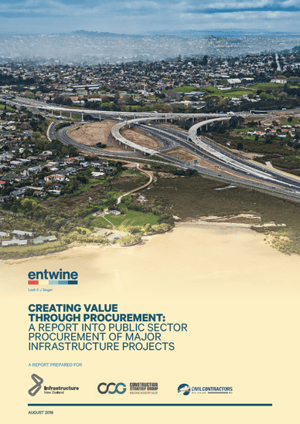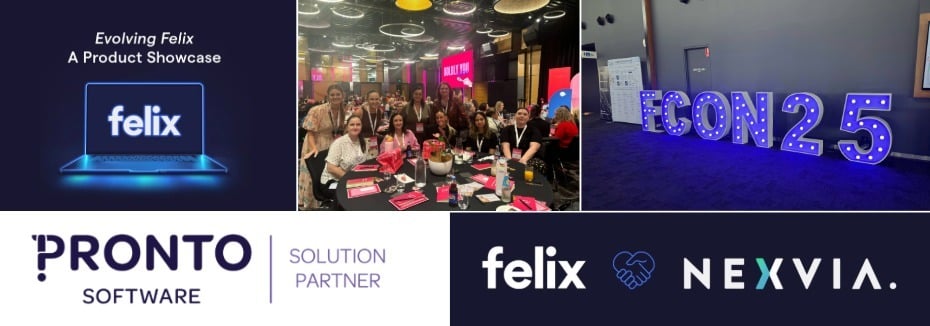In 2018 I had the opportunity to produce the report Creating Value through Procurement, a piece of research that focused on the New Zealand public sector’s procurement of major infrastructure projects.
 However, it’s proving to be somewhat of an ironic title, as the more that I reflect on the issue the less sure I am that procurement is the best descriptor to use for the complex and lengthy process that results in a newly built asset.
However, it’s proving to be somewhat of an ironic title, as the more that I reflect on the issue the less sure I am that procurement is the best descriptor to use for the complex and lengthy process that results in a newly built asset.
Procurement has many varied definitions. These range from Cambridge online Dictionary’s short and sweet ‘the process of getting supplies’, to the all-encompassing New Zealand government’s ‘the business processes associated with purchasing, spanning the whole cycle from the identification of needs through to the end of a service contract or the end of the useful life and subsequent disposal of an asset’.
Some have anchored the definition firmly in strategic territory ‘procurement is managing the suppliers to achieve your company’s strategic objectives’, but I can tell you now, that is not a definition overtly articulated by any Anglophone government, or at least not within their public-facing procurement literature.
So what are we really discussing when we talk of procurement in the context of built assets and the construction industry? Do we, as a collective, agree on what procurement means in this context, at its core, and in simple relatable language? Surely this is important to, as the title suggests, create value through it, whatever it is.
A moment then, on the origin of the word.
Procurement comes from the verb to procure, which has its roots in the Latin verb procurare. This Latin verb is composed of pro and curare. Although linguistically complex, pro in this context essentially means ‘on behalf of’ and curare, bearing a remarkable resemblance to our English word cure, means exactly that – ‘to attend to; to heal; to cure’.
This is one of my favourite interpretations yet – procurement as an act of ‘curing on behalf of’. When we procure, this is essentially what we are doing – looking outside the boundaries of our own organisation to find the ‘cure to our sickness’, or in more relatable language ‘the solution to our problems’.
We need something to sit on - we procure a chair. We need to dispose of our waste - we procure the services of a waste management company. We need to reduce congestion in our cities - we procure a road. We need to improve educational outcomes - we procure a school.
If procurement is fundamentally about sourcing solutions externally then my point is this. When a party procures in the context of an envisaged new capital asset, there is no solution yet. It does not exist.
When we procure, we're essentially looking outside the boundaries of our own organisation to find the ‘cure to our sickness’, or ‘the solution to our problems’.
All that exists is an understanding of the problem to be solved and in many cases an ill-defined understanding at that. So rather than a solution being obtained, acquired, or purchased, it is the problem-solving capability that is procured. Moreover, in the context of construction this problem-solving capability does not come from one single source, but a diverse range of disparate parties. Thus, construction industry procurement is the assembling of a problem-solving team.
However, this team does not consist of only those outside the organisation. Many of the project’s sub-problems – technical, logistical, regulatory, commercial, and in many cases impossible to resolve or predict in advance - require both action and decision-making from the procurer. In this sense, it is rarely possible to fully outsource the problem-solving function, because the procurer is intrinsically required within it.
There can be no hierarchy of vendor and vendee; there can be only collective collaborative effort.
Let me put it more simply still. Procurement - in the context of a new built asset - is the acquiring of essentially commitment from a group of skilled individuals, that they work together to create something new and unique to address the identified needs.
We're hosting a live webinar with Leah Singer on how to create value through public procurement, with lessons for the private sector. Click here to learn more.
A built asset, after all, is a means to an end, not an end in itself. The success of the solution is measured by the asset’s ability to respond to the challenges for which it was envisaged – reduced traffic congestion, improved learning outcomes, etc. These are the metrics by which public sector agencies are evaluated, all of which can and should be converted back into dollar values. Thus, it is not the cost-to-deliver that is of pre-eminent importance, but the cost-value relationship, i.e. the return on the investment. A built asset is not an expense.
To complicate matters further, the problem-solving team is not a static entity. Individuals will come and go as the project timeline moves from business case to design phase to build phase... Churn will also occur as people move through their careers. The team will also include stakeholders that are not even subject to procurement – e.g. regulatory parties – who can create both opportunity and constraints. The project environment is dynamic.
The process of realizing a major built asset is thus one of R&D at a scale of one-to-one, in real-time. There is no real-world prototype. There is no take-two. And if a new team is to be assembled for every major project, not even the supply chain can be refined through an exercise in continuous improvement. Every project is an adventure in innovation undertaken by people who are often strangers at the offset, and where relationships must be – should be – first established to create foundation stones for effective communication and information share – for teamwork.

There have been multiple complaints of a lack of leadership in the construction industry. The above may explain why leadership is essential. A party cannot simply procure a plethora of disparate entities and then take a hands-off approach. That party needs to outline a common vision, and then through adept leadership and management mould this rabble into a high performing cohesive unit to ensure the vision is achieved both efficiently and effectively. It is the responsibility of the procurer to ensure that these skills are in place, and sometimes even these need to be procured.
This is the reality of procurement in the context of new capital assets. These issues must be afforded the time they are due when the supply chain is selected.
Is it sensible to use the same word for this process, as one would apply to the purchasing of toilet paper? And if we must, can we at least spend some time on digesting the complexity of both the journey we are embarking on and the ecosystem we are establishing.
Sometimes these too must be designed anew.
Felix is hosting a live webinar with the author Leah Singer to extend the discussion on July 22.

Recent Articles
2025 in review: Milestones, insights and achievements
2025 – a year of that brought meaningful developments for Felix as we continue to address the evolving needs of organisations navigating complex supply-chain environments.
Top 10 reasons for a centralised vendor database
As organisations grow, so does the complexity of managing vendor relationships. Many still rely on spreadsheets or siloed systems, which can lead to inefficiencies, data inconsistencies, and compliance risks. A centralised vendor database offers a smarter, more scalable solution that brings structure, visibility, and control to procurement operations.
Here are the top 10 reasons why centralising your vendor data is a strategic move.
Five ways poor contract storage could be costing your organisation money
Contracts are the backbone of every business relationship – legally binding documents that define expectations, responsibilities, and value.
But what if the way your organisation stores those contracts is quietly costing you money?
Let's stay in touch
Get the monthly dose of supply chain, procurement and technology insights with the Felix newsletter.







